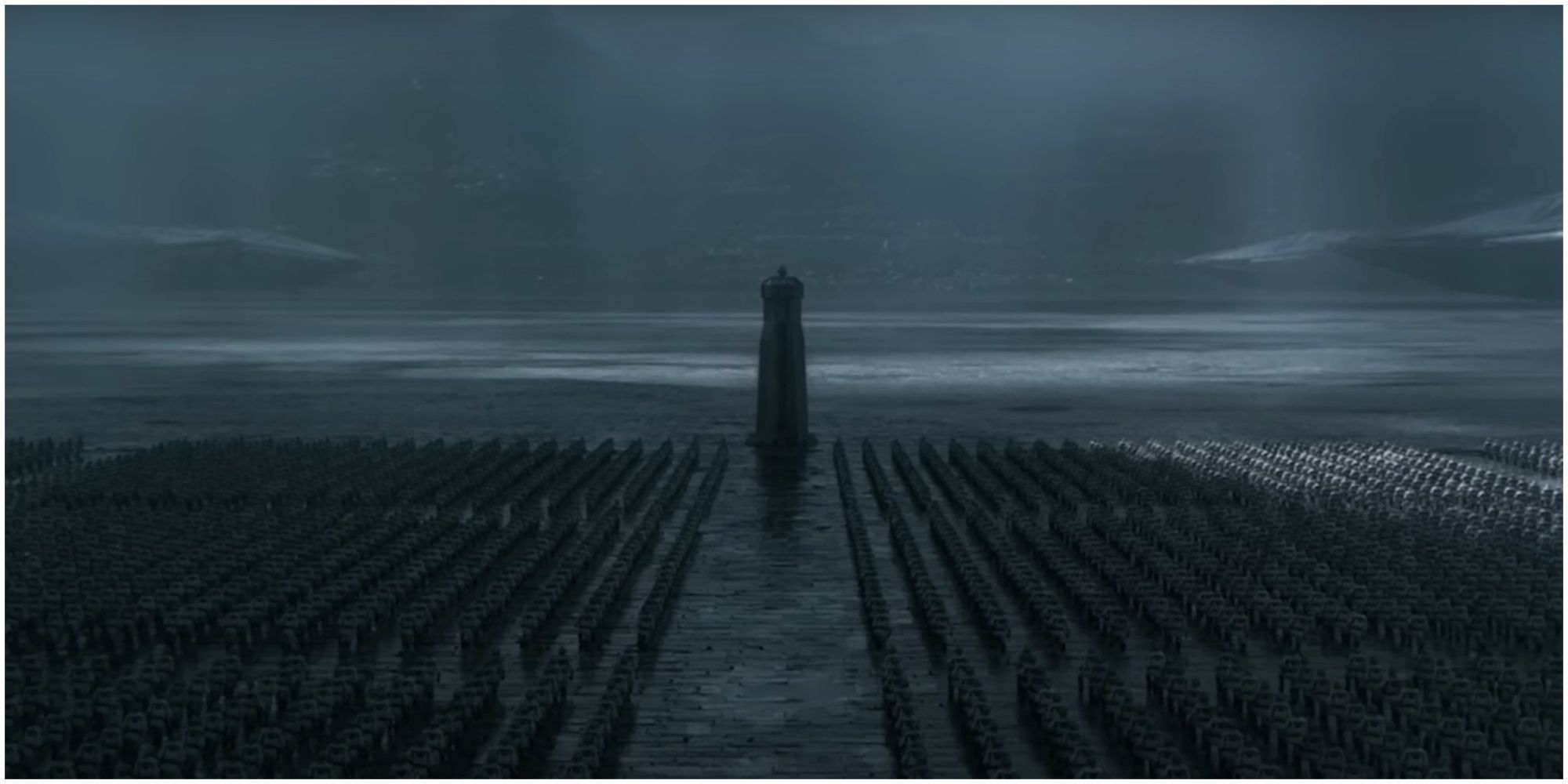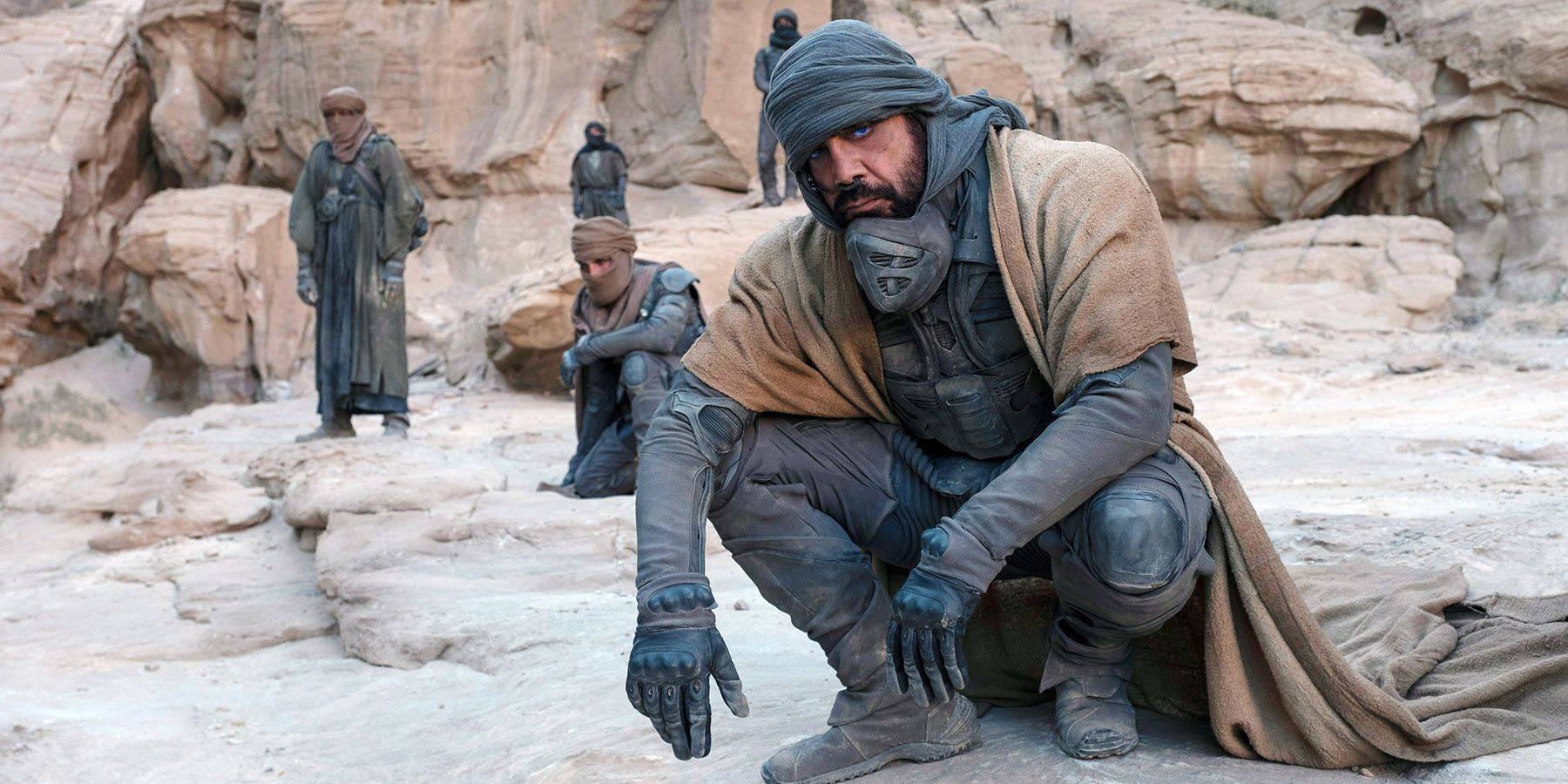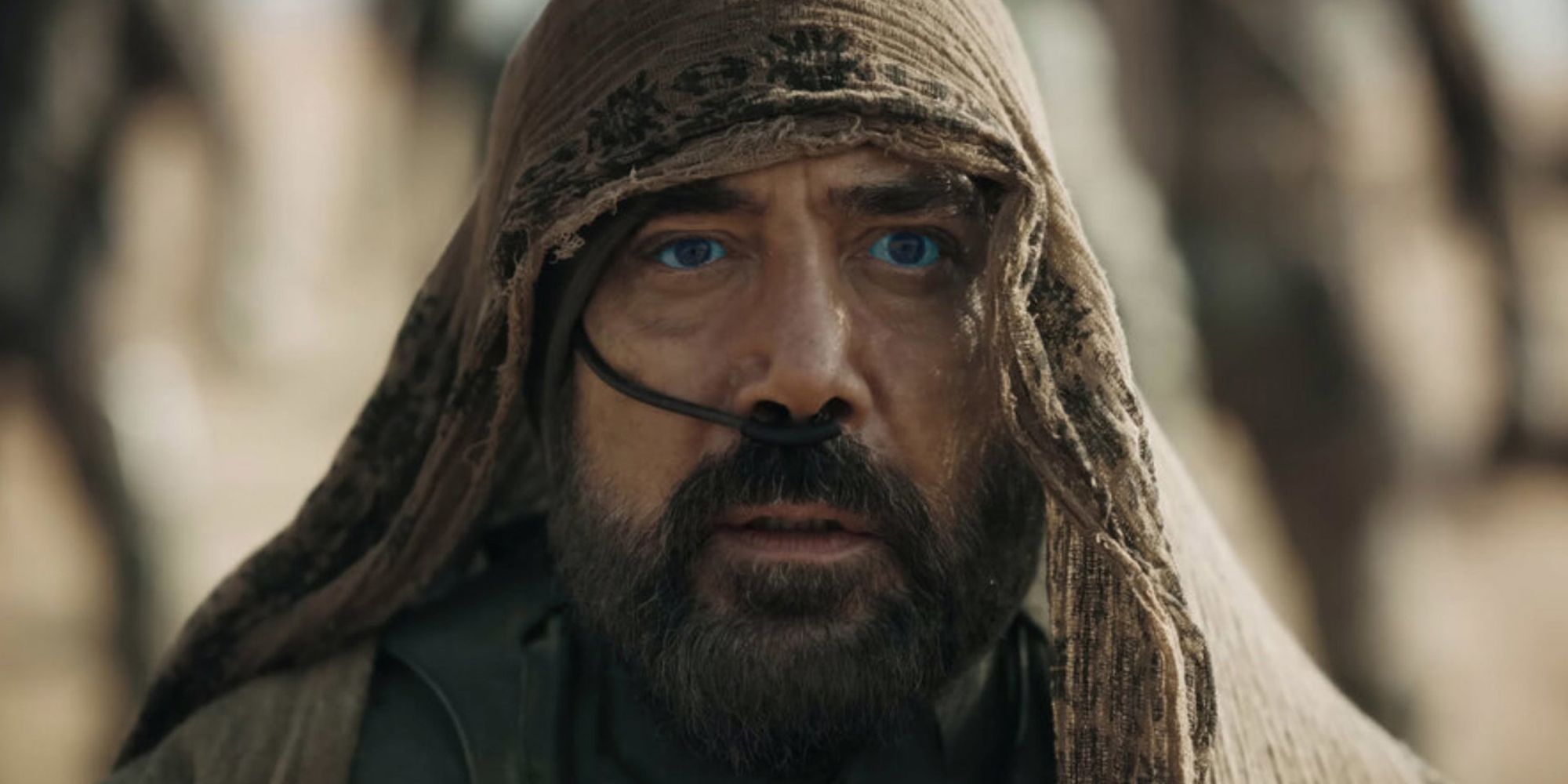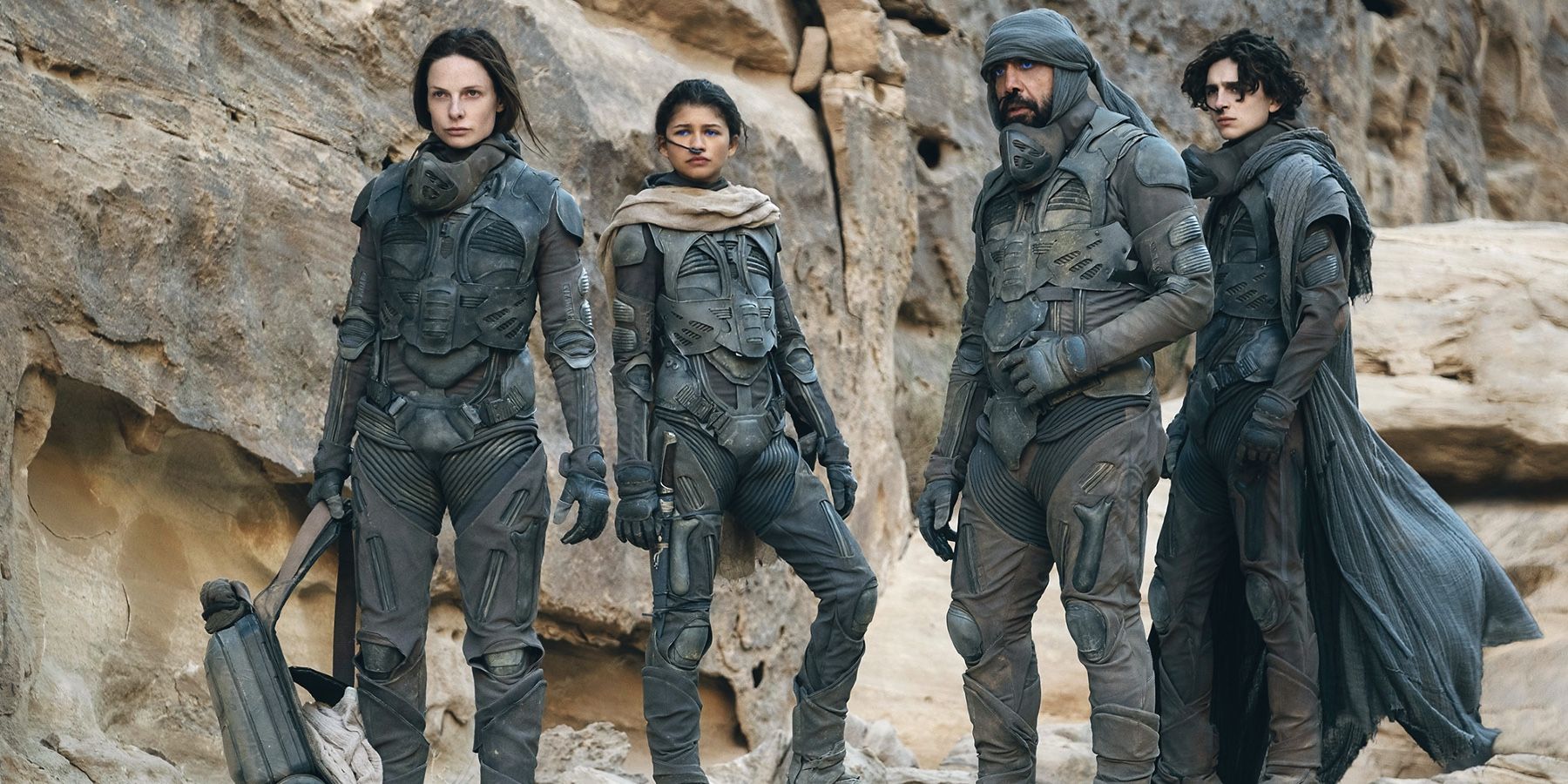Quick Links
Frank Herbert's science-fiction novel Dune boasts incredible world-building, and Denis Villeneuve's 2021 movie adaptation lives up to his vision. Dune: Part One and Part Two meticulously create a backdrop where the environment plays a crucial role in the story's events. The transition of Herbert's literary world-building to the visual medium is an example of excellence.
The Sietches of Arrakis stand out in the detailed setting; i.e., the interplanetary politics, the histories, the relocation to different worlds, and the economy of Dune. They come into prominence the minute House Atreides arrives to replace the Harkonnens in fief-complete on the desert planet. In Book 1, Dune, Baron Vladimir Harkonnen, his Mentat-Assassin Piter de Vries, and his nephew Feyd-Rautha discuss the trap that they and the Padishah Emperor have set for the Atreides on Dune. The Fremen, who are native to the desert planet, inevitably come up — as do their communities, the Sietches.

Dune: Salusa Secundus, Explained
The Imperial Army Planet, Salusa Secundus is quite the opposite of the lush Atreides' planet, Caladan in the Dune universe.
The Political Economy of Dune
From the viewpoint of political economy, the workings of the galactic empire are dictated by the relationship between the Corrino Imperium seated at Kaitain, and the forces of the Imperium. An abominable feudal structure flourishes, because alliances between the Emperor and the Great Houses of the Landsraad shape it. At the outset of the story, House Harkonnen ravaged Arrakis in quasi-fief under a CHOAM company contract. For 80 years, they mined the Spice Melange, which is the single most important commodity in Dune. Often called the Spice, the powerful substance is only found on Arrakis.
The Harkonnens resorted to brutal policies to "tame" the desert and its denizens. Their systemic dehumanization of the Fremen is evident in language such as "Fremen scum" and "Mongrel Fremen." Such terms serve as an important precursor to moral exclusion. Arrakis belongs to the Fremen, and their roots run deep in the lands that the Harkonnens profit from. The Baron likes to believe that his House managed to push whatever remains of the Fremen along the desert's edge with their sophisticated military and technological abilities. But the truth is, that they failed to quash them or reduce their numbers.
The major themes of Dune are colonialism and anti-colonialism, and, since it is primarily set on the desert planet of Arrakis, native resistance. The opening sequence of Villeneuve's 2021 adaptation shines a light on the Fremen and their resistance. Zendaya's character, the desert warrior Chani, speaks:
My Planet Arrakis is so beautiful when the sun is low. Rolling over the sands, you can see spice in the air. At nightfall, the spice harvesters land. [...] They ravage our lands in front of our eyes. Their cruelty to my people is all I've known. These outsiders, the Harkonnens, came long before I was born. [...] Our warriors couldn't free Arrakis from the Harkonnens, but one day, by Imperial decree, they were gone.
What Is A Sietch In Dune?
In Herbert's Dune, Dr. Yueh, the betrayer of Duke Leto, tells Paul that the Arrakeen population is generally divided into two: the people of the Graben, the Sink, and the Pan; and then the Fremen group. There's a certain degree of intermarriage between the two:
"The women of Pan and sink villages prefer Fremen husbands; their men prefer Fremen wives."
Paul's Father, Duke Leto Atreides, walks on to Arrakis despite feeling the trap. He aims to counter the Emperor's threat by appeasing the Fremen. He has sent Duncan Idaho on a mission to negotiate with the Fremen. Duncan lives with them for four weeks in the desert in a community called a Sietch.
The word Sietch means "place of assembly in time of danger." Over time, it grew to be used for the dwellings of the Fremen tribal communities. Stilgar is the leader (Naib) of the Sietch Tabr where Idaho stays while gambling on behalf of the Duke. When the Duke asks how the Sietches are hidden, Idaho simply says that they are underground and that Arrakis is full of caverns. Stilgar's Sietch houses 10,000 people. There are hundreds of such communities on Arrakis, meaning that the Fremen aren't a small population, but exist in millions.
Baron Harkonnen makes a bold claim, stating:
"There cannot be more than a handful of Fremen left after the Sardaukar pogrom and Rabban's oppression."
However, this is misleading. In Dune: Part One, the Old Mentat Thufir Hawat says that the Harkonnens had estimated that the total Fremen population was 50,000 in the whole of Arrakis.
Sietches: Locations And Functions
Duncan Idaho is thoroughly impressed by the Fremen of Dune. They tried to kill him in the beginning, but he succeeded in befriending them. By Duncan's admission, he's never come so close to death, as he did while fighting the fierce warriors of the Fremen. Stilgar (Javier Bardem) asks Duke Leto to respect the territorial integrity of the Sietches of Dune:
I ask for this: do not seek our Sietches. Do not trespass in our lands. The desert was ours long before you came. So, come and dig your spice, but [...] leave the desert to the Fremen.
Leto agrees, promising Stilgar:
"Your Sietches will be yours forever."
The Sietches of Dune are located within the planet's mountains or outcrops. The Fremen take residence either in the natural caves in the ground, artificial caving systems, or both. The Fremen know the large network of tunnels and caves beneath the desert like the backs of their hands. The Fremen live together in the Sietches, and their dwellings are the centers of their internal economies. Sietch Tabr and a few more also have stunted worms for Water of Life rituals. They manufacture things such as the Paracompass, Sand Compactor, Stillsuit, and materials from Spice. Even small-scale farming takes place inside most Sietches.
The Sietches are communities that withstood brutalities under the Harkonnens, but ask to be left unbothered under the Atreides in Dune: Part One.

Dune
Based on the novel by Frank Herbert, Dune follows the story of Paul Atreides played by Timothée Chalamet, whose family take control of a planet that holds the key to faster than light travel, and certain mental powers. This futuristic fantasy world is rife with politics, religion, wars and betrayals, as empires and factions fight for control over the planet.

Dune: Why Did The Emperor Send House Atreides To Arrakis?
The Atreides' departure to Arrakis marks the beginning of action in Dune, but what is the truth behind the Emperor's decision?





